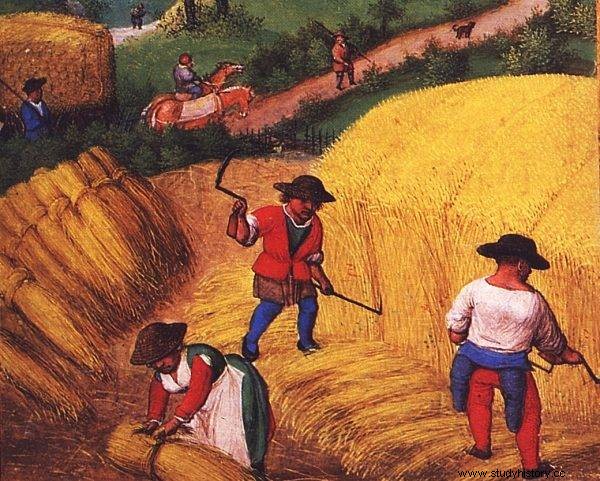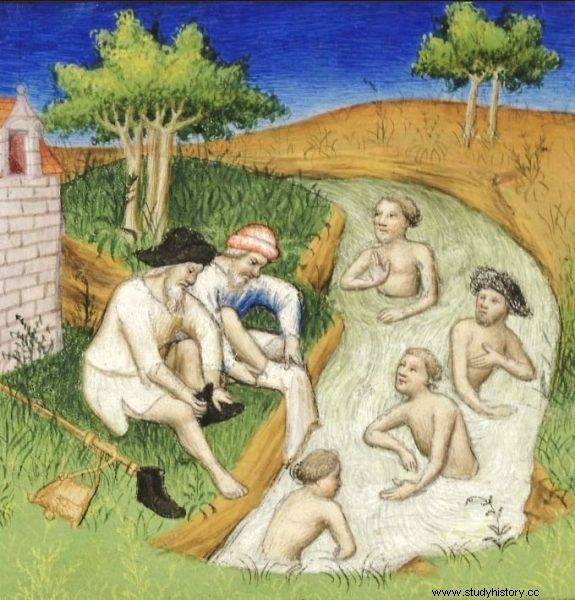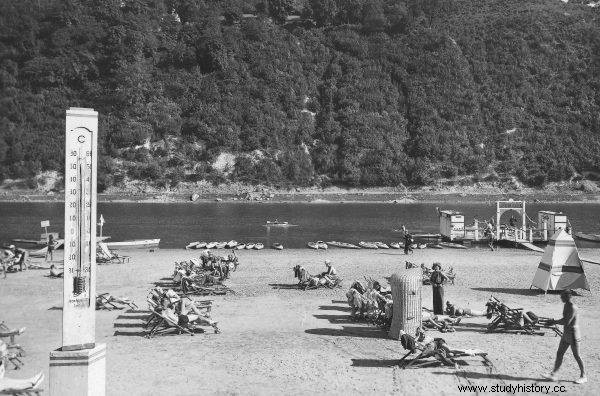We are hit by extreme heatwaves more and more often. Well, the climate is getting warmer. But exceptionally hot summers have already happened in Poland - a good few centuries ago!
Centuries ago, of course, there were no thermometers. Thus, chroniclers could not notice that in such and such a year temperature records were registered. But they could - and wrote - about the droughts that hit Poland even in the Middle Ages . The drought, of course, could theoretically be hydrological in nature, but the high temperatures certainly had something to do with it. And he reported about them in his Chronicles even Jan Długosz, although other accounts are known.
Drought, heat and ... expensive
The first drought mentioned by Długosz took place in 988. It came in spring and only prevented the planting of vegetables. And since snow fell after it, it can be presumed that there were no great heat waves at that time. The history writes slightly more space on the drought in 1121. It also directly mentions the heat that prevailed at that time. Interestingly, he does not write about them in the context of - as we would expect - the summer months, but the spring months:spring crops, but also scorched winter crops destroyed .

The combined drought and heat caused then a crop failure and high prices. They affected not only Poland, but also “neighboring lands and surroundings”.
Does that tell us something about the climate then? Or maybe the chronicler meant that the heat was out of proportion to the normal temperatures in these months? A climatologist would have to comment here. In any event, the combined heat and droughts then caused crop failures and prices. They affected not only Poland, but also “neighboring lands and surroundings”.
According to Jan Długosz, another catastrophic year was 1332. Wprost described how unusual the temperatures of that time were: This year in Poland it was so hot that before the John the Baptist, the grains were approaching and were completely usable; the waters dried up and the rivers abandoned their beds. The old people did not remember such heat and drought, and therefore considered them strange . Anyway, he entitled the same note "Extraordinary drought and heat in Poland". Let us recall:the feast of the birth of John the Baptist falls on June 24. It must be that day here, as another note from Długosz also refers to it.
Comet heralding disaster
However, Długosz devotes most of his attention to the drought of 1473. It was certainly not without significance that he had the opportunity to observe it personally. At the outset, he informs that the arrival of drought was preceded by the appearance of a comet . The drought itself then covered many European countries. The entire length of the Vistula River - from Kraków and Sandomierz, through Warsaw and Płock, to Toruń - was so shallow that it could be crossed on foot. There were fires that could not be put out . In Krakow, on July 26, a fire consumed the Church of St. Jadwiga. The fires also spread to other cities:Wieliczka, Konin, Chełm and Lubomla. The chronicler even suggested that the scale of the catastrophe was caused by arsonists marauding in Poland, sent by the Hungarian king Matthias Corvinus.

The entire length of the Vistula River - from Kraków and Sandomierz, through Warsaw and Płock, to Toruń - was so shallow that it could be crossed on foot. (illustrative illustration)
Interestingly, in another source - Chronicle of elementary disasters - we can find a mention of a drought from 1469, when the condition of the Odra River was so low that it was possible to pass it from summer to autumn . In this context, the lack of information on this subject in Długosz is puzzling.
Dry Years
Another historian who described droughts and heat waves in Poland was Father Gabriel Rzączyński, author of the book Historia Naturalis Curiosa Regni Poloniae. The accounts from this work, however, are shorter than those written by Długosz. Rzączyński even mentions the years 1539 and 1540. He made a brief note on this subject: due to the great drought, the Vistula was crossed by horse near Grudziądz, without swimming . Confirmation of this information can also be found in another source, the mentioned Chronicle of elementary disasters . In one of its volumes there is a mention that in 1540 supposedly six months without rain, and the Odra riverbed was overgrown with greenery .
Another, more detailed description of the effects of meteorological turbulences can be found in Rzączyński in reference to 1708. Then during the summer and autumn it rained only a few times, for this reason it was impossible to plow in the fields, and thus also to effect autumn crops . Anyway, the first two decades of the 18th century were to be quite difficult for Poland in general. For example, in 1718 a drought caused the burning of all crops. On the other hand, in 1719, due to heat and a lack of rainfall, the crop failure affected Wielkopolska and Silesia.
A hot century
The weather kept us on fire - literally - also in the 20th century. Probably the most spectacular example of this is the heat wave of 1921. That summer, not only Poland, but also other European countries suffered from the heat pouring from the sky. Again this time numerous fires were caused by unusually high temperatures . Many hectares of forests were burnt. The extreme weather also caused numerous losses in agriculture. The situation was made even worse by the lack of rainfall.
What kind of heat did Poles deal with then? The meteorological stations in the Second Polish Republic recorded temperatures of up to 40ºC and above. It was then that a certain record was set. Well, on July 29, 1921 in Prószków, located about 10 km from Opole, as much as 40.2 ° C was registered! Fortunately, it was the last day of that fateful heatwave. He was followed by downpours and storms. Another thing is that agriculture took time to recover.

The meteorological stations in the Second Polish Republic recorded temperatures of up to 40ºC and above. In the picture. beach in Zaleszczyki. On the left side there is a large thermometer showing over 50 degrees Celsius.
But the summer of 1921 was not tragic for everyone. Paradoxically, the heat and the lack of water became water for the mill for insurance companies. They were happy to publish advertisements like this in the press: Insure yourself against fire! Everyday newspapers report on fires. Huge values die in flames. Harvest crops are lost, cattle are killed, expensive farm equipment, houses and forests are lost. Ba! Even whole sediments turn to dust . I wonder what the insurance premiums were then?
Warm, warmer, burns!
Extreme heat waves and droughts also hit post-war Poland. The 1950s took their toll in this regard in particular. It is fair to say that this decade started and ended hotly. And so in 1951, as Henryk Mitosek writes: In Puławy, for example, practically speaking, the drought lasted from the last days of July until the end of the second decade of November , that is for over three and a half months . The potato harvest fell by 10-20%. It even happened that, seeing the complete lack of yields of winter cereals, only a part of the area was sown with them. It was feared that rye or wheat would have to be sufficient even for 1953.
Also in 1952, August turned out to be extremely hot. On August 7, 39.2ºC was recorded in Krosno. On August 15, it was 37.1ºC in Sandomierz, and 36.5ºC in Rzeszów. The decade was closed by a heat wave and another drought in 1959. The maximum temperatures were then even higher than seven years earlier. This time July turned out to be particularly hot. On July 11, the recorded temperature of 39.6 ° C was recorded in Kończewice. Another records from this year are 38.8 ° C, recorded on July 12 in Ciechocinek and measured on July 10:38.3 ° C in Bydgoszcz and 38.2 ° in Toruń, Poznań, Koło and Wałcz.
Although in recent years the heat pouring from the sky has made us sweat, let us remember that our ancestors also had a hard time. In addition, they did not have many achievements of modern technology. Unfortunately, according to many forecasts, we must prepare for the fact that heat waves will happen more and more often in Poland ...
